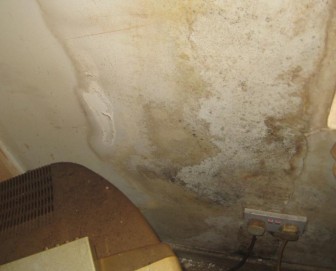
A national campaign warning about the dangers of damp and mould could help save lives, a leading property association says.
A recent report prompted by the death of two-year-old Awaab Ishak found more than one in 20 social housing homes now has a problem with these issues.
The Regulator of Social Housing (RSH) found that out of England’s four million social homes, 6% had either “notable” or “serious” damp problems, which is equivalent to 240,000 properties.
And the National Association of Property Buyers fear the cost of living crisis is likely to see that number sky-rocket.
Spokesman Jonathan Rolande said: “Damp and mouldy homes don’t just make life a misery – they put lives at risk. That’s why it is vital that Ministers do more in this area. We need a national campaign to raise awareness, because all the evidence points towards the fact the number of homes being impacted by these issues is rising.
“With around 4m social homes in the UK, 200,000 is a really significant amount and adds up to potentially around one million people. I fear the cost of living crisis is only making this issue more acute.”
The report was instigated after a landmark inquest in November ruled that Awaab died from a respiratory condition after prolonged exposure to mould in his home in Rochdale, Greater Manchester.
The investigation showed that many landlords did not have a clear idea of the condition of their housing stock.
The government later vowed to “name and shame” landlords who are failing to maintain adequate housing.
Explaining the main reasons properties suffer with dampness, Rolande added: “Rain is a massive contributory factor. This can enter the home through a porous external wall or because of defective guttering or roofing. Once it has penetrated it soaks into insulation and plasterwork. This is a perfect environment for mould to grow. The UK is experiencing increasing amounts of torrential rainfall.
“Rising damp is a problem too. A more unusual cause as most properties built after 1930 have an adequate damp proof course (DPC) to stop moisture from the ground from entering the home. However, the DPC can be breached if soil or paving is built up around the outside walls.
“Condensation often creates damp as well. We all experience condensation in our homes when cooking or after a shower. Good ventilation is key, moisture has to be allowed to escape. Many people don’t ventilate adequately in an effort to preserve warmth in the home.


Comments are closed.